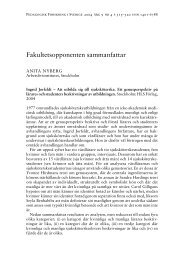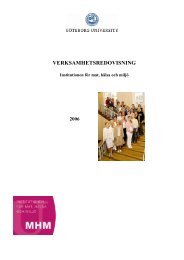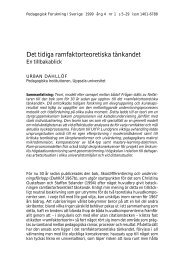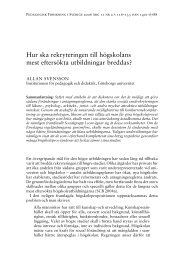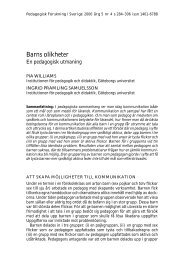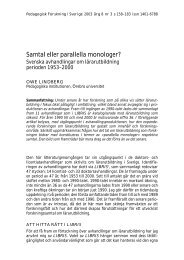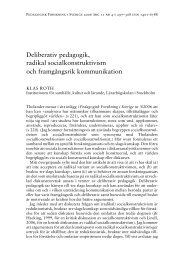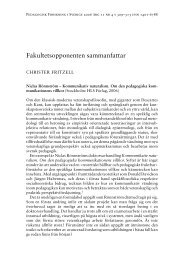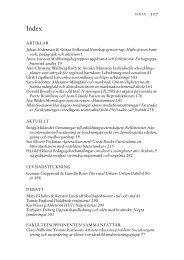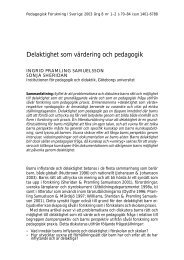University of Oslo Workshops June 29-30 Conference July 1-3 ...
University of Oslo Workshops June 29-30 Conference July 1-3 ...
University of Oslo Workshops June 29-30 Conference July 1-3 ...
Create successful ePaper yourself
Turn your PDF publications into a flip-book with our unique Google optimized e-Paper software.
1 <strong>July</strong><br />
16:00-18:00<br />
Room: AK 2138<br />
Track C TEDS-M - Session 3<br />
Aspects <strong>of</strong> Measuring Teacher Education Programs<br />
Chair: Barbara Malak<br />
Discussant: Liv Sissel Grønmo<br />
Diagnosing Specific Strengths and Weaknesses <strong>of</strong> Teacher Education by<br />
Using Different Approaches to Modeling Multidimensionality<br />
Sigrid Blömeke, Humboldt <strong>University</strong> <strong>of</strong> Berlin, Germany<br />
Ute Suhl, Humboldt <strong>University</strong> <strong>of</strong> Berlin, Germany<br />
Richard T. Houang, Michigan State <strong>University</strong>, USA<br />
Teacher knowledge is a complex domain. Mathematics content knowledge (MCK) and<br />
mathematics pedagogical content knowledge (MPCK) overlap conceptually and they show<br />
a strong empirical correlation. Therefore, different models are plausible to represent their<br />
structure: Besides a traditional unidimensional approach, which was used in TEDS-M and<br />
in which MCK and MPCK are treated as two separate latent traits, MCK and MPCK could<br />
also be treated as one homogenous trait called “teacher knowledge”. Alternatively, a twodimensional<br />
model could be applied. Here, we have the choice between models<br />
representing the conceptual overlap <strong>of</strong> MCK and MPCK either through “between-item<br />
multidimensionality” or “within-item multidimensionality” (Adams et al., 1997). Another<br />
important question in modeling the dimensions <strong>of</strong> teacher knowledge is whether their<br />
interplay is homogeneous across countries (measurement invariance) or whether it is<br />
necessary to treat these as multiple groups.<br />
The purpose <strong>of</strong> this study is to inquire benefits and limits <strong>of</strong> each modeling approach (cf.<br />
Hartig & Höhler, 2008) by comparing model fit, loading patterns, proportion <strong>of</strong> variance<br />
explained and descriptive results as well as by relating these results to opportunities to<br />
learn in teacher education (OTL). The scientific community still struggles to define a<br />
concept <strong>of</strong> pedagogical content knowledge that separates this dimension from content<br />
knowledge and that takes cultural differences into account (Graeber & Tirosh, 2008). The<br />
study aims to contribute to this discourse from an empirical point <strong>of</strong> view. The basic<br />
hypothesis is that only more sophisticated multi-dimensional and multi-group models are<br />
able to represent teacher knowledge appropriately.<br />
Keywords: mathematics content knowledge; pedagogical content knowledge;<br />
multidimensional IRT model; within-item multidimensionality; measurement invariance<br />
66



